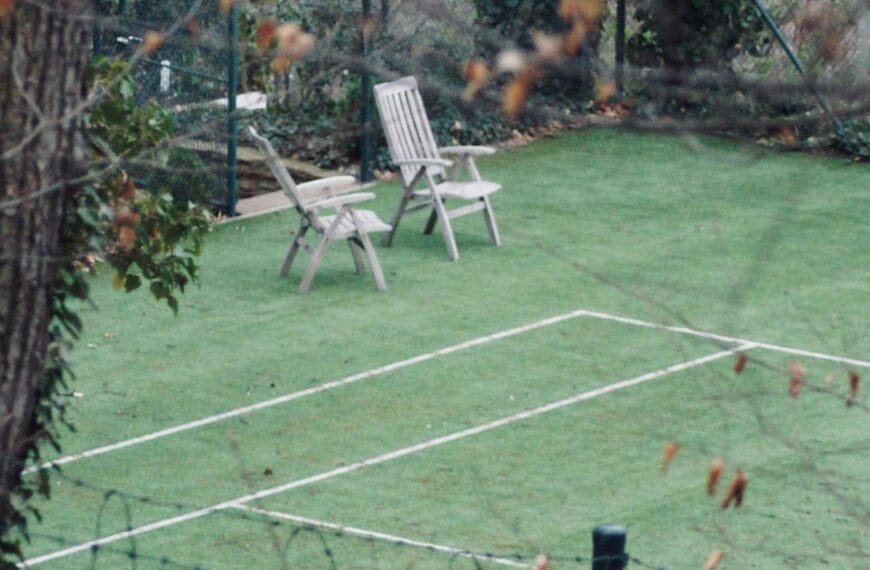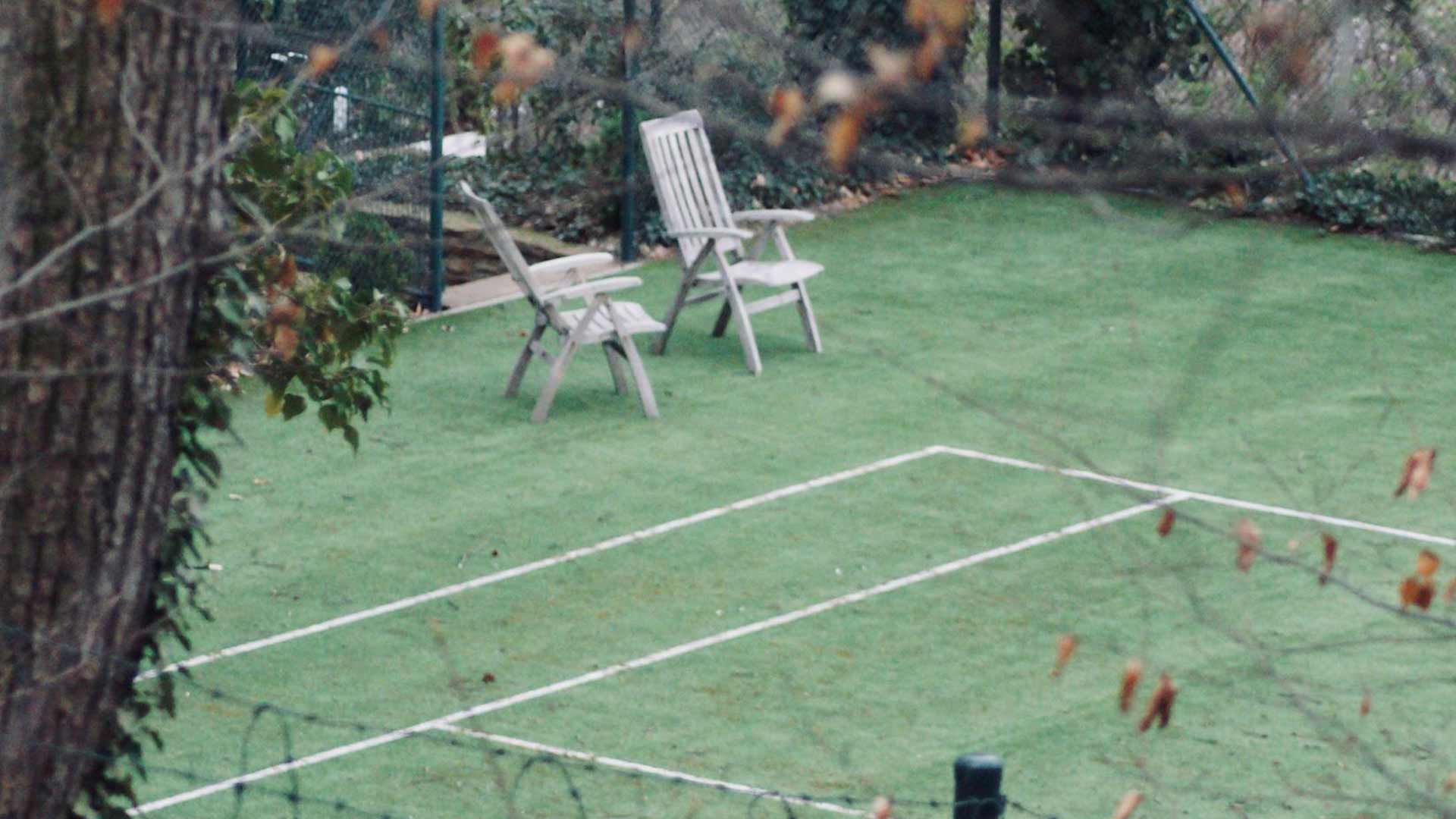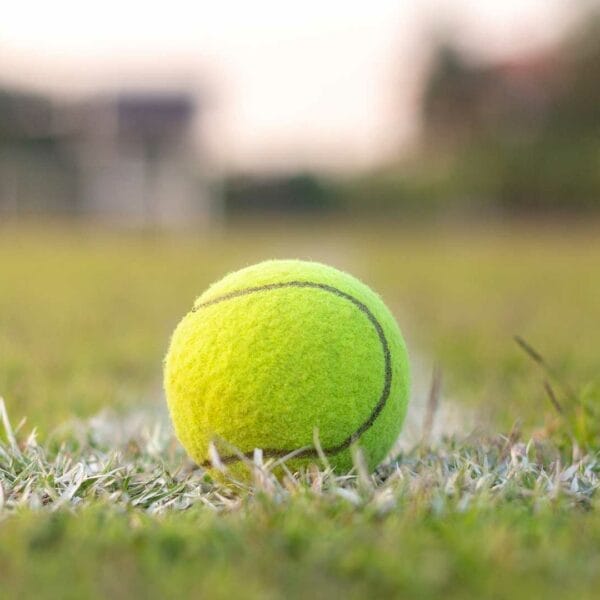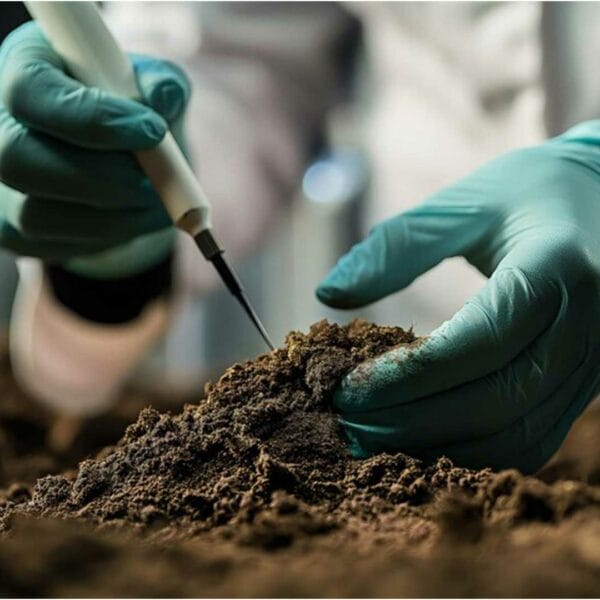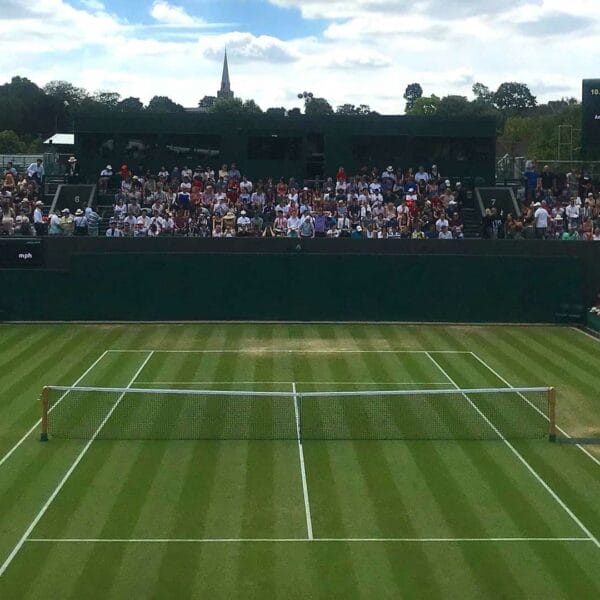The Environmental Impact of Grass Court Fertilizers
Introduction to Grass Court Fertilizers
Grass court fertilizers are crucial in maintaining the health and appearance of tennis courts worldwide. These specialized fertilizers are designed to promote lush green growth, improve durability, and enhance overall playing conditions. However, the widespread use of these products has raised concerns about their potential environmental impact.
Grass court fertilizers primarily provide essential nutrients, such as nitrogen, phosphorus, and potassium, to the grass. These nutrients help stimulate growth, repair damage, and prevent disease. The most common types of fertilizers used on grass courts include synthetic organic compounds, slow-release fertilizers, and natural or organic alternatives.
Synthetic organic compounds, also known as quick-release fertilizers, contain readily available nutrients that promote rapid growth but can lead to over-fertilization if not managed properly. Slow-release fertilizers, on the other hand, release nutrients gradually over an extended period, reducing the risk of over-fertilization but potentially leading to inconsistent growth patterns.
Natural or organic alternatives, such as compost tea and fish emulsion, offer a more environmentally friendly option. They provide beneficial microorganisms and micronutrients that promote healthy soil biota and plant growth. Natural fertilizers may require more frequent applications and monitoring to achieve optimal results despite these benefits.
As the demand for sustainable practices continues to grow, it’s essential to understand the environmental implications of grass court fertilizers and explore alternative methods for maintaining healthy grass courts. In the following sections, we will delve into the specific environmental concerns associated with fertilizer use, including nitrogen pollution, impacts on local water sources, and effects on soil quality and ecosystems.
Types of Fertilizers Used on Grass Courts
Grass court fertilizers come in various forms, each offering distinct benefits and drawbacks. Understanding the different types of fertilizers used on grass courts is essential for selecting the most suitable product for your specific needs.
Synthetic Organic Compounds:, also known as quick-release fertilizers, contain readily available nutrients that promote rapid growth. They are often less expensive than other options and can be effective in stimulating grass growth. However, if not managed properly, They can lead to over-fertilization resulting in excessive nutrient runoff and potential harm to the environment.
Slow-Release Fertilizers: These products release nutrients gradually over an extended period, reducing the risk of over-fertilization. They are often more expensive than quick-release fertilizers but can provide consistent growth patterns and improved soil health. Slow-release fertilizers are ideal for grass courts with varying weather conditions, as they can adapt to changing environmental factors.
Natural or Organic Alternatives: Compost tea, fish emulsion, and other natural fertilizers offer a more environmentally friendly option. They provide beneficial microorganisms and micronutrients that promote healthy soil biota and plant growth. While they may require more frequent applications and monitoring to achieve optimal results, natural fertilizers can reduce the reliance on chemical-based products and minimize the risk of environmental contamination.
Organic Acids: These products contain naturally occurring acids, such as citric acid or acetic acid, which help to break down complex nutrients and make them available to plants. Organic acids can be particularly effective in improving soil structure and promoting healthy microbial activity.
Micronutrient Fertilizers: These products focus on delivering essential micronutrients, such as iron, manganese, and zinc, which are critical for plant growth and development. Micronutrient fertilizers can be especially useful for addressing specific nutrient deficiencies in the soil.
Understanding the different types of fertilizers used on grass courts enables you to make informed decisions about your maintenance routine and choose the best products for your specific needs. By considering factors such as growth rates, soil type, and environmental concerns, you can select the most effective and sustainable fertilizer options for your grass court.
Environmental Concerns Associated with Fertilizer Use
The use of fertilizers on grass courts has several environmental implications that cannot be ignored. One of the primary concerns is nitrogen pollution, which occurs when excess nitrogen from fertilizers enters waterways and causes eutrophication. This process leads to an overgrowth of algae, depletes oxygen levels, and ultimately harms aquatic life.
Another significant concern is the leaching of phosphorus into groundwater, which can contaminate drinking water sources and contribute to the formation of dead zones in water bodies. Additionally, the application of synthetic fertilizers can disrupt the delicate balance of soil ecosystems, leading to a decline in beneficial microorganisms and an increase in pathogens.
Fertilizers can also have negative impacts on local wildlife, including birds, bees, and butterflies, which rely on pollinator-friendly plants and flowers that are often affected by fertilizer use. Furthermore, the production and transportation of fertilizers contribute to greenhouse gas emissions, exacerbating climate change.
The improper disposal of fertilizer packaging and containers can also pose environmental hazards, as they may contain toxic chemicals and heavy metals. In some cases, fertilizer spills can occur during storage or application, releasing pollutants into the environment and posing risks to human health and the ecosystem.
To mitigate these environmental concerns, sustainable practices in grass court management, such as using organic or slow-release fertilizers, implementing integrated pest management strategies, and maintaining accurate records of fertilizer applications., are essential. By taking proactive steps to minimize the environmental impact of fertilizer use, we can create healthier and more resilient grass courts while protecting the surrounding ecosystem.
Nitrogen Pollution from Grass Court Fertilizers
Nitrogen pollution is one of the most significant environmental concerns associated with the use of fertilizers on grass courts. When excess nitrogen from fertilizers enters waterways, it can cause eutrophication, a process that leads to an overgrowth of algae, depletes oxygen levels, and ultimately harms aquatic life. This phenomenon is particularly prevalent in golf courses and sports fields where large amounts of nitrogen-based fertilizers are applied regularly.
The excessive application of nitrogen-based fertilizers can lead to nitrate leaching, where nitrates seep into groundwater,. This contamination of drinking water sources poses serious health risks to humans and animals. According to the United States Environmental Protection Agency (EPA), nitrate contamination is a major concern in many parts of the world, affecting millions of people who rely on contaminated water sources for their daily needs.
In addition to impacting human health, nitrogen pollution from grass court fertilizers can devastate aquatic ecosystems. Excess nutrients from fertilizers can stimulate the growth of algae, leading to algal blooms that can suffocate fish and other aquatic organisms. Moreover, the decomposition of dead algae consumes oxygen in the water, creating “dead zones” where no life can exist.
Adopting best management practices (BMPs) that promote efficient fertilizer use and minimize waste is essential to mitigating the risks associated with nitrogen pollution from grass court fertilizers.
Some effective strategies include:
* Implementing integrated nutrient management plans that take into account soil type, climate, and crop requirements
* Using slow-release or controlled-release fertilizers that release nutrients gradually, reducing the risk of overapplication
* Applying fertilizers at optimal rates and times to minimize leaching and runoff
* Monitoring soil and water quality to detect early signs of nutrient imbalances
* Developing and promoting sustainable fertilizer products that reduce environmental impacts while maintaining turf health
By adopting these strategies and working together to address the issue of nitrogen pollution from grass court fertilizers, we can help protect our environment, preserve biodiversity, and ensure the long-term sustainability of our natural resources.
Impact of Fertilizers on Local Water Sources
The use of fertilizers on grass courts has far-reaching consequences that extend beyond the tennis facility’s immediate surroundings. One of the most critical environmental concerns associated with fertilizer use is its impact on local water sources. Excess fertilizers can contaminate surface waters and groundwater and even affect drinking water quality.
Fertilizers containing nitrogen and phosphorus can contribute to the formation of algal blooms, which can be toxic to aquatic life. These blooms can also consume oxygen in the water, creating “dead zones” where no life can exist. In addition, the presence of excess nutrients in waterways can lead to eutrophication, a process that degrades water quality and harms aquatic ecosystems.
According to the United States Environmental Protection Agency (EPA), agricultural runoff, including fertilizers from golf courses and sports fields, is a significant source of water pollution in the country. The EPA estimates that approximately 70% of the nation’s streams and rivers do not meet water quality standards due to excess nutrient levels.
Fertilizers can severely impact local water sources, especially in areas with limited water treatment infrastructure. Contaminated water sources can pose serious health risks to humans and animals, including increased risk of cancer, neurological damage, and reproductive problems.
Some of the key statistics highlighting the severity of this issue include:
* Over 40% of the world’s wetlands have been lost due to eutrophication caused by excess nutrient levels.
* The economic costs of water pollution in the United States alone are estimated to exceed $100 billion annually.
* Exposure to contaminated water sources has been linked to an increased risk of birth defects, developmental delays, and other adverse health outcomes.
To mitigate the risks associated with fertilizer use and protect local water sources, it is essential to adopt best management practices (BMPs) that promote efficient fertilizer use and minimize waste. This includes implementing integrated nutrient management plans, using slow-release or controlled-release fertilizers, applying fertilizers at optimal rates and times, monitoring soil and water quality, and developing and promoting sustainable fertilizer products. By taking proactive steps to address this issue, we can help preserve the integrity of our water sources and ensure the long-term sustainability of our natural resources.
Effects of Fertilizers on Soil Quality and Ecosystems
The use of fertilizers on grass courts profoundly impacts soil quality and the ecosystems surrounding these facilities. While fertilizers may provide short-term benefits for turf growth and maintenance, their long-term effects can be detrimental to soil health and biodiversity.
Soil Degradation
Excessive fertilizer application can degrade soil, reducing its fertility and structure over time. HFertilizers containing high levels of nitrogen and phosphorus can also cause soil pH imbalances, leading to nutrient deficiencies and decreased microbial activity. This can reduce soil organic matter, decrease water-holding capacity, and increase erosion susceptibility.
Impact on Microorganisms
Fertilizers can disrupt the delicate balance of microorganisms in the soil, affecting the overall ecosystem. Excess nutrients can stimulate the growth of certain microbe populations while suppressing others, leading to an imbalance in soil biota. This can compromise soil’s ability to support plant growth, filter pollutants, and regulate climate.
Loss of Biodiversity
The widespread use of fertilizers on grass courts contributes to the loss of biodiversity in surrounding ecosystems. By altering soil chemistry and disrupting microorganism communities, fertilizers can create conditions that favour invasive species and weed growth, out-competing native plants and wildlife. This can lead to a decline in ecosystem services, including pollination, pest control, and carbon sequestration.
Soil Compaction and Runoff
Heavy fertilizer applications can also lead to soil compaction, making the soil more susceptible to erosion and runoff. WExcessive fertilizers can also leach into nearby waterways, contributing to water pollution and harming aquatic ecosystems.
Mitigating the Effects
To minimize the negative impacts of fertilizers on soil quality and ecosystems, tennis facilities can adopt sustainable practices, such as:
* Implementing integrated nutrient management plans to optimize fertilizer use
* Using slow-release or controlled-release fertilizers to reduce peak nutrient availability
* Applying fertilizers at optimal rates and times to avoid overapplication
* Monitoring soil health and adjusting fertilizer programs accordingly
* Promoting soil conservation through cover cropping, mulching, and reduced tillage
By adopting these strategies, tennis facilities can reduce their environmental footprint, maintain healthy soils, and support biodiversity in surrounding ecosystems.
Alternative Methods for Maintaining Healthy Grass Courts
Alternative methods for maintaining healthy grass courts have gained significant attention in recent years due to growing concerns about the environmental impact of traditional fertilizers. These innovative approaches focus on promoting sustainable turf management practices that prioritize soil health, biodiversity, and ecosystem services.
One effective alternative method is the use of natural and organic fertilizers, such as compost tea, manure, and green sand. These products promote soil biota and provide essential nutrients without disrupting the delicate balance of microorganisms. Additionally, they tend to release nutrients slowly, reducing the risk of overfertilization and subsequent environmental harm.
Another approach is implementing integrated Pest Management (IPM) systems, which combine physical, cultural, biological, and chemical controls to manage pests and diseases. IPM strategies often involve monitoring soil moisture, temperature, and nutrient levels to identify potential issues before they become severe. This proactive approach reduces the need for chemical pesticides and fertilizers, minimizing the environmental footprint of grass court maintenance.
Cover cropping and crop rotation are also valuable tools for maintaining healthy grass courts. By planting cover crops between games or during off-season periods, facility managers can improve soil structure, increase organic matter, and suppress weeds. Crop rotation helps to break disease and pest cycles, reducing the reliance on chemical controls and promoting a balanced ecosystem.
Furthermore, advances in turfgrass breeding and selection have led to the development of low-maintenance, drought-tolerant varieties that require fewer inputs and generate less waste. These new cultivars can thrive in challenging environments, reducing the need for excessive watering, mowing, and fertilizing.
Lastly, many tennis facilities are exploring the use of artificial turf alternatives, such as hybrid or synthetic surfaces,. These surfaces offer improved durability, reduced maintenance requirements, and enhanced sustainability. They can also significantly decrease the environmental impact associated with traditional grass court maintenance, making them an attractive choice for environmentally conscious facility managers.
By embracing these alternative methods, tennis facilities can reduce their environmental footprint, promote soil health, and maintain healthy, thriving grass courts that benefit both players and the surrounding ecosystem.
Regulations and Guidelines for Sustainable Fertilizer Use
Regulations and guidelines for sustainable fertilizer use are becoming increasingly important as tennis facilities strive to minimize their environmental impact. Various organizations and governments have established regulations and standards to promote responsible fertilizer application in response to growing concerns about fertiliser pollution.
The United States Environmental Protection Agency (EPA) has set limits on nitrogen and phosphorus levels in fertilizers, while the European Union’s Fertiliser Regulation sets strict guidelines for fertilizer composition and labelling. The International Tennis Federation (ITF) has also developed guidelines for sustainable tennis court management, including recommendations for fertilizer use and waste reduction.
In addition to these regulatory frameworks, several certifications and labels have been introduced to help consumers identify environmentally friendly fertilizers. For example, the OMRI (Organic Materials Review Institute) certification ensures that fertilizers meet rigorous standards for organic production, while the EPA’s Safer Choice label recognizes products that meet stringent criteria for human health and environmental safety.
Tennis facilities can also seek guidance on sustainable fertilizer use from industry associations and professional organizations. The National Turfgrass Federation, for instance, provides resources and best management practices for turfgrass management, including recommendations for fertilizer application rates and timing.
To ensure compliance with regulations and guidelines, facility managers should develop a comprehensive fertilizer management plan that takes into account factors such as soil type, climate, and local water sources. This plan should include regular monitoring of fertilizer application rates, soil nutrient levels, and water quality to prevent overfertilization and minimize environmental harm.
Ultimately, adopting sustainable fertilizer practices requires a commitment to ongoing education and training. Facility managers should stay up-to-date with the latest research and developments in turfgrass management, attend workshops and conferences, and participate in online forums and discussion groups to share knowledge and best practices with peers. By working together, we can reduce the environmental impact of grass court fertilizers and create healthier, more sustainable tennis facilities for generations to come.
Case Studies of Successful Sustainable Tennis Court Management
Case studies of successful sustainable tennis court management offer valuable insights into effective strategies for reducing the environmental impact of grass court fertilizers. These examples demonstrate how tennis facilities can adopt innovative approaches to maintaining healthy grass courts while minimizing their ecological footprint.
The US Tennis Association’s (USTA) sustainability initiative at its national headquarters in White Plains, New York, serves as an exemplary model for sustainable tennis court management. The USTA implemented a comprehensive fertilizer management plan that includes regular soil testing, precision fertilizer application, and integrated pest management techniques. As a result, the facility reduced its fertilizer usage by 30% and minimized its carbon footprint.
Another notable case study is the Australian Open’s efforts to reduce its environmental impact through sustainable tennis court management. The tournament organizers implemented various initiatives, including the use of organic fertilizers, efficient irrigation systems, and rainwater harvesting. These measures significantly reduced energy consumption and greenhouse gas emissions.
In the UK, the Lawn Tennis Association (LTA) has launched a series of sustainability projects to promote environmentally friendly tennis court management practices among its member clubs. One such project involved developing a bespoke fertilizer management system that uses data analytics to optimize fertilizer application rates and minimize waste. This approach has helped LTA member clubs reduce their fertilizer usage by up to 25%.
These case studies highlight the importance of collaboration between tennis facilities, industry experts, and government agencies in achieving sustainable tennis court management. They demonstrate that with careful planning, innovative approaches, and a commitment to ongoing education and training, it is possible to maintain healthy grass courts while minimizing the environmental impact of grass court fertilizers.
Conclusion and Future Directions for Reducing Environmental Impact
In conclusion, the use of grass court fertilizers poses significant environmental concerns, including nitrogen pollution, degradation of local water sources, and adverse effects on soil quality and ecosystems. The widespread adoption of alternative methods for maintaining healthy grass courts and stricter regulations and guidelines for sustainable fertilizer use can mitigate these issues. By prioritizing environmentally friendly practices in tennis court management, we can reduce the ecological footprint of grass court maintenance while preserving the integrity of these iconic playing surfaces. Ultimately, a shift towards more sustainable approaches will benefit the environment and promote a healthier and more resilient ecosystem, ensuring the long-term viability of grass courts worldwide.


